Monuments in South Korea offer a captivating glimpse into its celebrated history and cultural heritage. From grand ancient palaces to moving memorials, these landmarks stand as powerful symbols of the nation’s enduring legacy. They reflect centuries of royal tradition, religious devotion, and modern resilience. Whether you’re passionate about history or simply exploring new destinations, visiting these iconic sites provides a deeper understanding of Korea’s soul. Each monument tells a story, making a journey through South Korea not only educational but also truly unforgettable for any traveller seeking meaning and beauty.
10 Breathtaking Monuments In South Korea
Here is a list of some of the famous monuments in South Korea.
1. Gyeongbokgung Palace (Seoul)
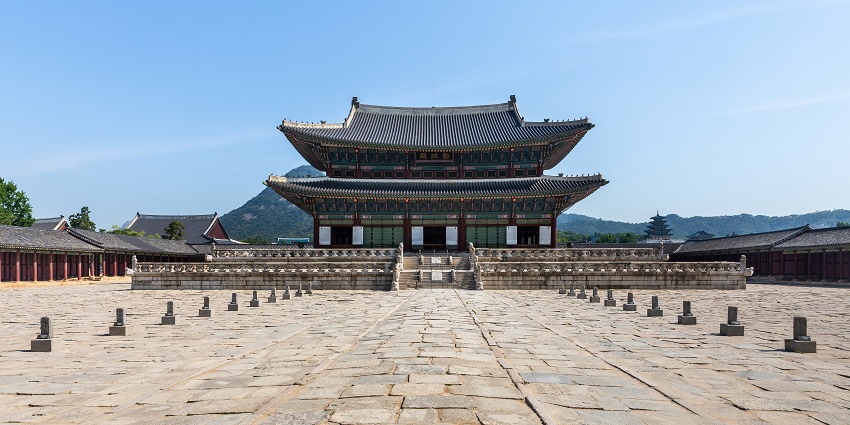
Photo: Basile Morin / Wikimedia Commons
Constructed in 1395, Gyeongbokgung Palace served as the principal royal residence during the Joseon Dynasty. As the largest of Seoul’s Five Grand Palaces, it showcases traditional Korean architecture and houses the National Palace Museum and the National Folk Museum. The palace is renowned for its picturesque Gwanghwamun Gate and the ceremonial changing of the guard, offering visitors a glimpse into Korea’s rich royal heritage.
Location: 161 Sajik-ro, Jongno-gu, Seoul
Timings: 9 AM – 6 PM (Closed on Tuesdays)
Nearest Airport: Gimpo International Airport (GMP) – 15.5 km
2. Changdeokgung Palace (Seoul)
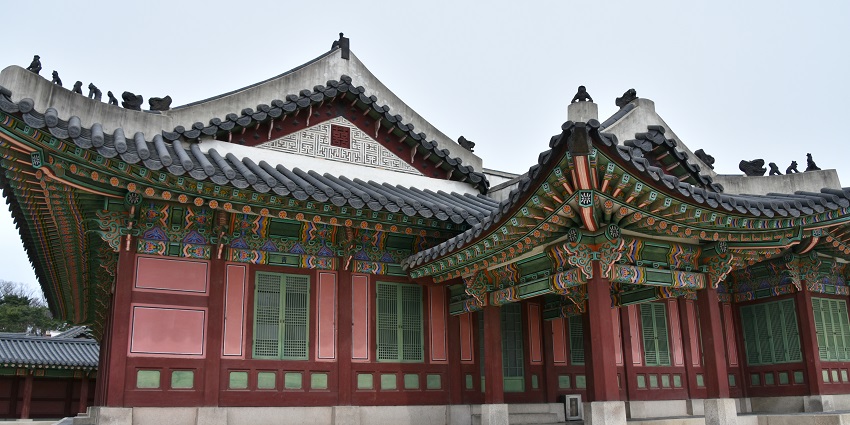
Photo: Richard Mortel / Wikimedia Commons
Designated as a UNESCO World Heritage Site, Changdeokgung Palace is celebrated for its harmonious integration with the natural terrain. Built in the early 15th century, the palace’s design adheres to the principles of pungsu (feng shui), emphasizing harmony with nature. Its Secret Garden, or Huwon, was a private retreat for royalty, featuring pavilions, ponds, and ancient trees that exemplify traditional Korean landscaping.
Location: 99 Yulgok-ro, Jongno-gu, Seoul
Timings: 9 AM – 6 PM (Closed on Mondays)
Nearest Airport: Incheon International Airport (ICN) – 60 km
3. Bulguksa Temple (Gyeongju)
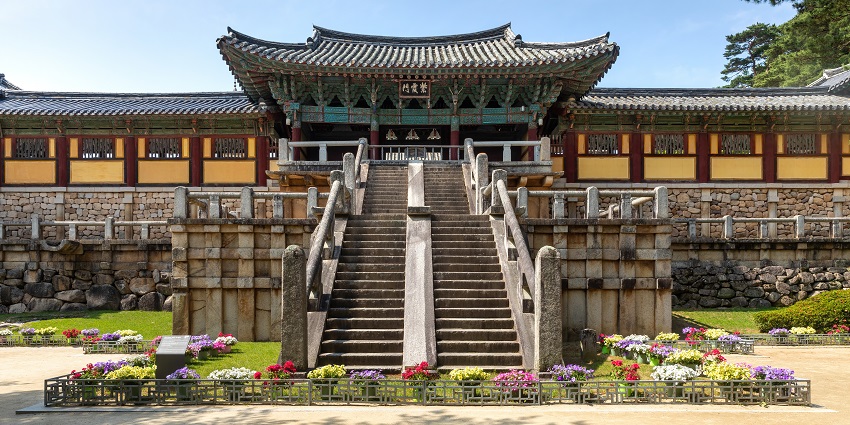
Photo: Basile Morin / Wikimedia Commons
Bulguksa Temple, a masterpiece of Silla architecture, dates back to the 8th century. This UNESCO World Heritage Site houses several national treasures, including the Dabotap and Seokgatap pagodas. The temple’s carefully carved wooden structures and stone terraces reflect the spiritual and artistic achievements of the Unified Silla period, making it one of the significant monuments in South Korea for both religious and historical study.
Location: 385 Bulguk-ro, Gyeongju-si, Gyeongsangbuk-do
Timings: 7 AM – 5 PM
Nearest Airport: Ulsan Airport (USN) – 22 km
4. Hwaseong Fortress (Suwon)
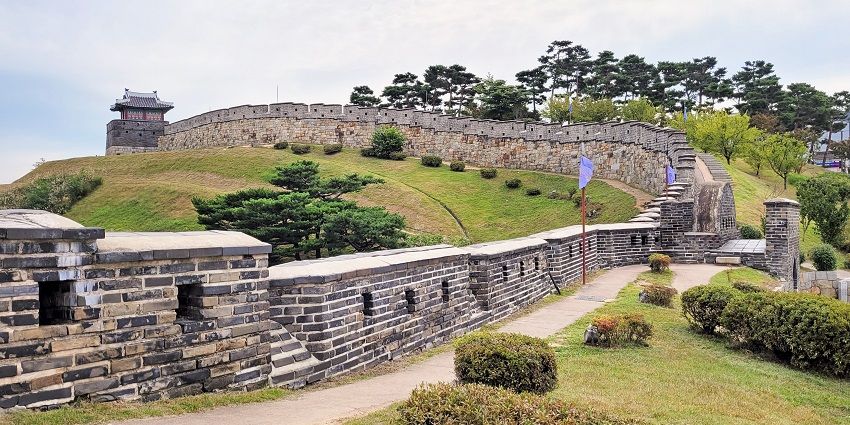
Photo: Bernard Gagnon / Wikimedia Commons
Constructed in the late 18th century, Hwaseong Fortress exemplifies the innovative military architecture of the Joseon era. The fortress incorporates features from both Eastern and Western fortification designs, adapting to the surrounding terrain of hills and plains, making it one of the important monuments in South Korea. Its walls, gates, and observation towers offer panoramic views of Suwon and serve as a testament to Korea’s historical defense strategies.
Location: 320-2 Jangan-dong, Paldal-gu, Suwon-si, Gyeonggi-do
Timings: 9 AM – 6 PM
Nearest Airport: Incheon International Airport (ICN) – 67 km
5. Haeinsa Temple (Hapcheon)
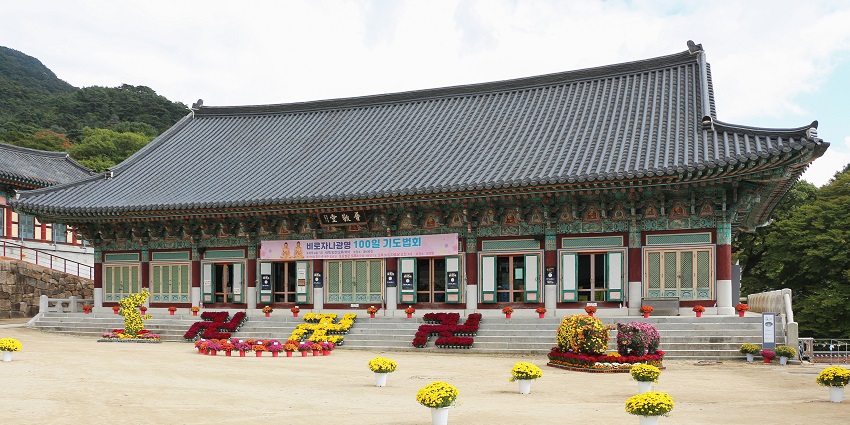
Photo: Bernard Gagnon / Wikimedia Commons
Located in the mountains of Gayasan National Park, Haeinsa Temple is home to the Tripitaka Koreana, the most complete collection of Buddhist texts carved onto over 80,000 wooden printing blocks. These 13th-century artifacts are housed in the Janggyeong Panjeon, a building designed with advanced preservation techniques. The temple remains a vital center for Korean Buddhism and a symbol of the nation’s religious heritage.
Location: 122 Haeinsa-gil, Gaya-myeon, Hapcheon-gun, Gyeongsangnam-do
Timings: 08:30 AM – 5 PM
Nearest Airport: Daegu International Airport (TAE) – 80 km
6. The Blue House (Cheong Wa Dae, Seoul)
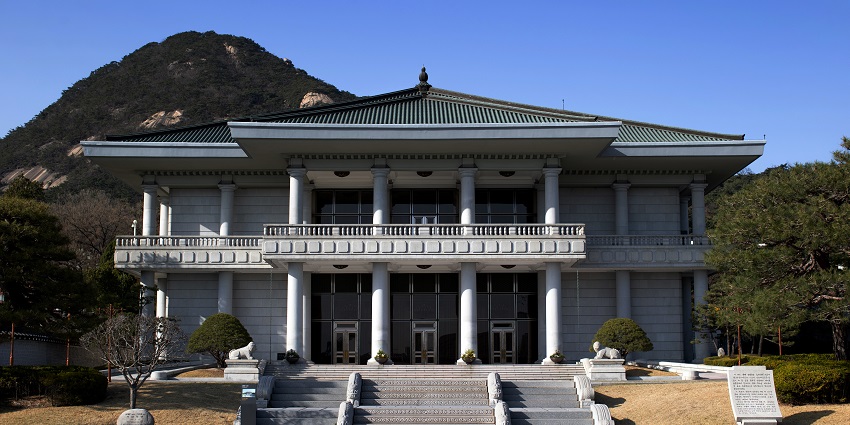
Photo: Republic of Korea / Wikimedia Commons / Image For Representation Only
Cheong Wa Dae, commonly known as the Blue House, served as the executive office and official residence of the South Korean president until 2022. Located at the foot of Bugaksan Mountain, the complex is renowned for its distinctive blue-tiled roofs and traditional Korean architectural style. Now open to the public, it offers insights into the nation’s modern political history and leadership.
Location: 1 Cheongwadae-ro, Jongno-gu, Seoul
Timings: 09 AM – 6 PM (Closed on Tuesdays)
Nearest Airport: Gimpo International Airport (GMP) – 14.1 km
7. Dol Hareubang (Jeju Island)
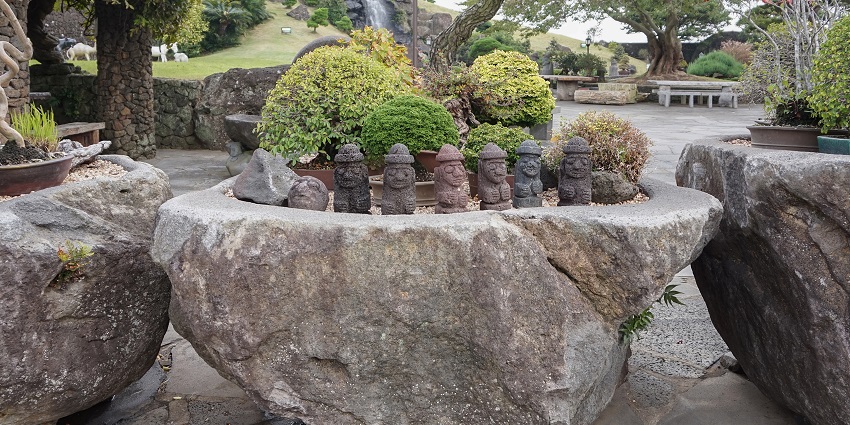
Photo: Bernard Gagnon / Wikimedia Commons
Dol Hareubang are large stone statues found throughout Jeju Island, believed to be guardians against demons and symbols of fertility and protection. Carved from porous volcanic rock, these statues date back to at least the early Joseon period. Their distinctive features, such as bulging eyes, a broad nose, and hands resting on the belly, make them iconic representations of Jeju’s unique cultural heritage.
Location: Various locations across Jeju Island
Nearest Airport: Jeju International Airport (CJU) – 3 km
8. Jeonju Hanok Village (Jeonju)
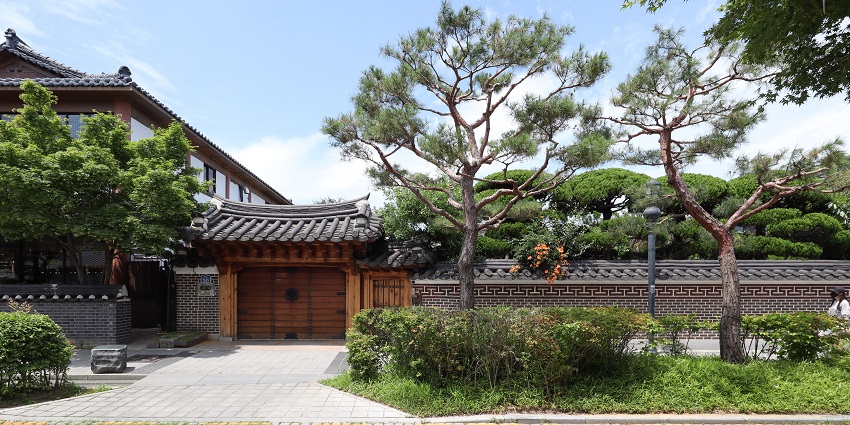
Photo: Mobius6 / Wikimedia Commons
Jeonju Hanok Village is a preserved area showcasing over 800 traditional Korean houses, known as hanok. The village offers a glimpse into Korea’s architectural and cultural heritage, with its narrow alleys, traditional teahouses, and artisan workshops. Visitors can experience the charm of the Joseon era, making it a living museum of Korean history and lifestyle, and one of the famous monuments in South Korea.
Location: 99 Girin-daero, Wansan-gu, Jeonju-si, Jeollabuk-do
Nearest Airport: Gunsan Airport (KUV) – 60 km
9. Statue Of Peace (Seoul)
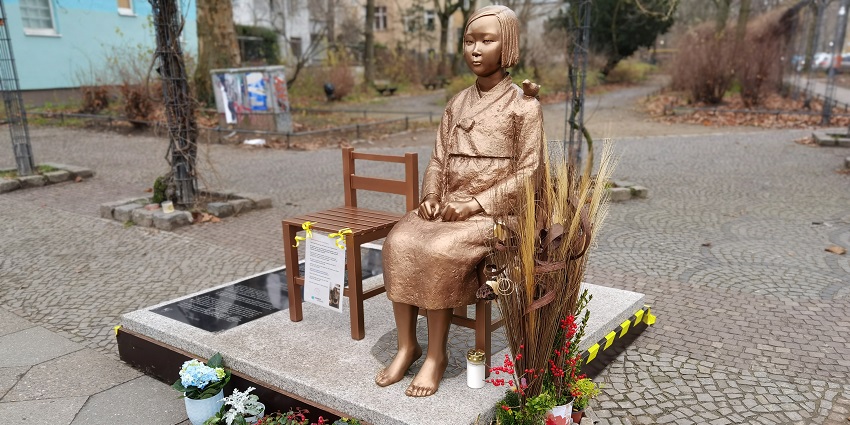
Photo: C. Suthorn. / Wikimedia Commons
The Statue of Peace is a poignant monument commemorating the Korean “comfort women” who suffered during World War II. Located near the Japanese embassy in Seoul, the statue depicts a young girl sitting on a chair, symbolizing the victims’ resilience and the ongoing quest for justice. It serves as a powerful reminder of the atrocities faced by these women and the importance of historical acknowledgment.
Location: 173 Sejong-daero, Jongno-gu, Seoul
Nearest Airport: Gimpo International Airport (GMP) – 15 km
10. N Seoul Tower (Seoul)

Photo: Aleksandar Pasaric / Pexels
Situated atop Namsan Mountain, N Seoul Tower is an iconic communication and observation tower offering panoramic views of Seoul’s skyline. Built in 1971, it stands as a symbol of the city’s modernization and technological advancement. Visitors can enjoy the tower’s observation decks, restaurants, and the famous “Locks of Love” fence, making it a popular destination for both tourists and locals.
Location: 105 Namsangongwon-gil, Yongsan-gu, Seoul
Timings: 10 AM –11 PM
Nearest Airport: Gimpo International Airport (GMP) – 16.4 km
The historical monuments in South Korea are not just architectural marvels but narratives etched in stone and wood, telling stories of resilience, artistry, and cultural evolution. From the grandeur of ancient palaces to the solemnity of memorials, each site offers a unique window into the nation’s soul. To explore these wonders, plan your journey with TripXL to experience places that connect you with the heart of Korea’s heritage.
Cover Photo: penny0618 / Pixabay


 WhatsApp
WhatsApp
 Twitter
Twitter









